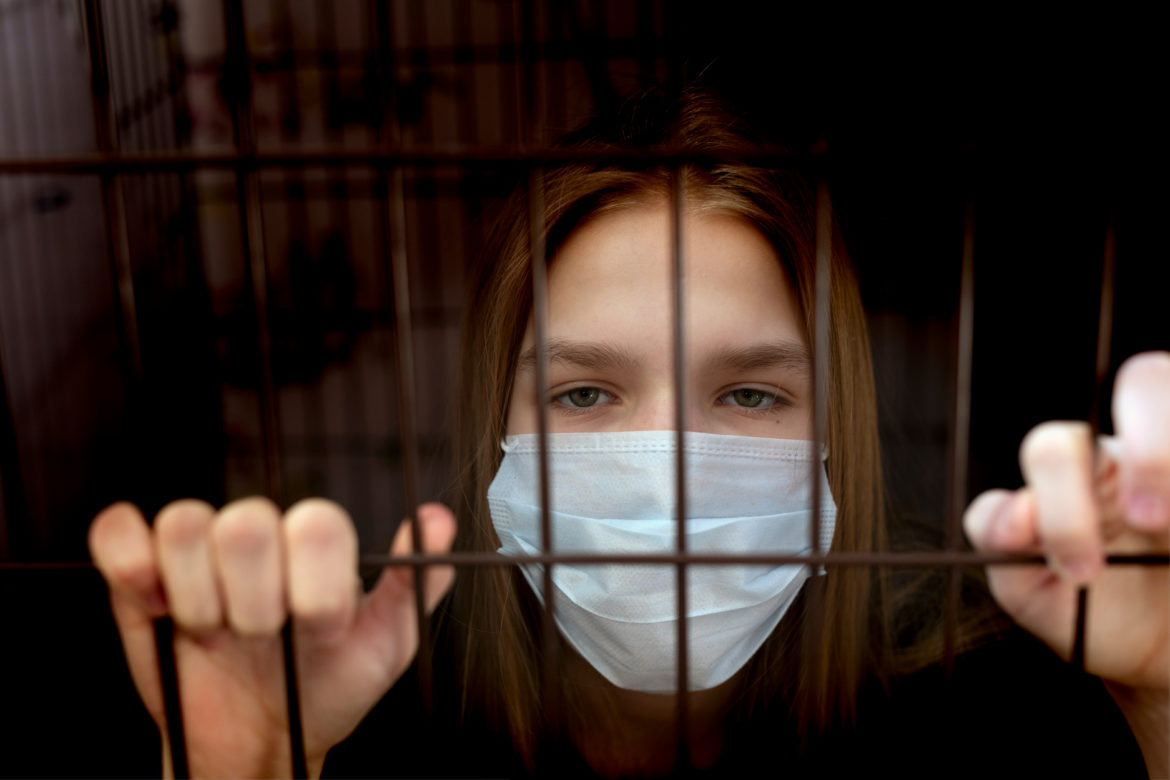![]() From Louisiana to New York, juvenile detention centers are reporting more staff and children testing positive for COVID-19. Incarcerated youth are extremely vulnerable to infection. We know these numbers will only continue to get worse unless youth justice systems act immediately. Releasing youth from locked facilities where social distancing is impossible or avoiding sending them there in the first place is critical. This is why even those of us who have experience running such facilities are calling for action.
From Louisiana to New York, juvenile detention centers are reporting more staff and children testing positive for COVID-19. Incarcerated youth are extremely vulnerable to infection. We know these numbers will only continue to get worse unless youth justice systems act immediately. Releasing youth from locked facilities where social distancing is impossible or avoiding sending them there in the first place is critical. This is why even those of us who have experience running such facilities are calling for action.

Gladys Carrion
Longer-term transformations to end reliance on youth prisons and detention centers, which even absent a pandemic are unhealthy environments for developing young people, are also necessary and overdue. Our experience shows that this is best achieved when systems leaders collaborate with advocates and community members.
A new report from the Urban Institute advises leaders of youth justice agencies on how to close youth prisons. This is part of a broader effort to transform states’ response to young people who are in conflict with the law. The report presents lessons learned from youth correctional administrators who led prison closures. Successful agents built their cases using data, research and collaboration with a wide range of stakeholders. As a former agency leader and advocate, respectively, we recognize that “inside-outside” collaboration is key.

Mishi Faruqee
When we started working together in 2007, we had an unusual partnership. Gladys had taken the helm of New York State Office of Children and Family Services (OCFS), a sprawling state agency overseeing child care and child welfare services, as well as operating 31 youth prisons scattered in rural communities. Mishi coordinated the New York Juvenile Justice Coalition, a group of legal agencies, social service providers and children’s rights organizations advocating for youth justice reform. At the time, system leaders and advocates hardly spoke, much less collaborated.
A few months before Gladys’ appointment to lead OCFS, 15-year-old Darryl Thompson died at the Tryon boys’ prison, after two staff members had restrained him on the ground and he stopped breathing. His death was the tragic result of a punitive, destructive culture.
Gladys made an immediate commitment to address the systemic failures inside youth prisons that led to Thompson’s death. She banned staff from physically restraining youth, trained them to de-escalate incidents and created independent oversight. She wanted to work together not to simply reform the system — but to transform it, Gladys told advocates. Since children live in the context of a family and a community, the agency’s focus should not be creating better youth prisons, she said, but closing them and redirecting resources to support young people and their families in their communities.
Inside-outside strategy
In 2008, Gladys convinced Gov. David Paterson to create a task force, including several advocates, charged with planning for a transformed youth justice system. The task force found that the state’s reliance on incarcerating youth in rural upstate prisons did not protect public safety, given the system’s astronomical recidivism rates. Community-based alternatives to incarceration produced far better outcomes. The task force report, published in 2009, presented comprehensive recommendations for reducing the number of youth incarcerated, downsizing and closing facilities, and investing in communities.
Over the next seven years, OCFS and advocates undertook an inside-outside strategy to close youth prisons and invest in community-based alternatives for young people. We faced staunch opposition from legislators representing districts with youth prisons. Unions representing prison staff organized members to oppose closures.
To counter the opposition, the Juvenile Justice Coalition partnered with OCFS on an advocacy and communications campaign that would have been impossible to run from within the government. OCFS shared agency data with advocates, which the coalition used to lobby legislators, write dozens of op-eds calling for shifting funds from youth incarceration to community programs, persuade editorial boards and create ads targeting specific legislators. It worked. The state closed 21 youth prisons between 2007 and 2014.
Collaboration was not always easy. Sometimes we disagreed. Yet through clear communication and transparency, we maintained a strong working relationship.
The Urban Institute report published in March notes that seminal events can be a catalyst. As youth justice agencies grapple with safeguarding youth during the pandemic, they also face an opportunity to seize the moment by partnering with advocates and community members to create a better solution than incarceration. Our experience shows that youth justice system administrators and advocates can work together to close youth prisons and achieve a shared mission of greater safety and better outcomes for young people and their families and communities.
Gladys Carrión, Esq., is the reform-minded former commissioner of the New York City Administration for Children's Services and a nationally recognized advocate for improving child well-being.
Mishi Faruqee is the national field director of the Youth First Initiative. Previously, she worked as an advocate for juvenile justice and criminal justice reform in New York with the Correctional Association of New York, first as director of the Women in Prison Project and later as director of the Juvenile Justice Project, as the director of youth justice programs at the Children’s Defense Fund-NY and as special assistant to the commissioner at the New York City Department of Probation.

Gladys Carrion is no savior. She closed facilities while asking judges to send delinquents to private agencies. Then resigns from OCFS to lead the private agencies. While under her watch, 2 children die. She resigns before the investigation ends. Real leader right there